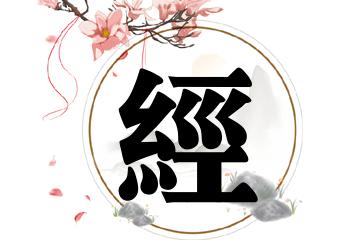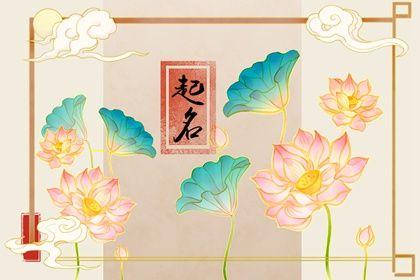如何为拓印绘画起一个独具匠心的名称
- 作者: 朱梧漾
- 来源: 投稿
- 2024-09-30
一、如何为拓印绘画起一个独具匠心的名称
以主题或意象为灵感自然之美:叶脉之舞、花瓣的印记、树皮的纹理
抽象表达:墨迹狂想曲、色彩漩涡、线条交织
历史或文化:古埃及象形文字、日本浮世绘、中世纪羊皮纸
突出拓印技术压印之美:压印的痕迹、纹理的探索、浮雕的印象
摩擦的艺术:摩擦的魅力、纸张的纹理、颜料的流动
拓印的印记:拓印的印记、时间的痕迹、记忆的碎片
结合个人风格或情感我的自然印记:大自然的馈赠、与自然的联系、宁静的时刻
抽象的表达:内心的风景、情绪的映射、想象力的释放
怀旧的回忆:过去的印记、珍贵的时刻、情感的回响
使用比喻或隐喻叶脉的脉搏:生命的节奏、自然的连接、时间的流逝
花瓣的吻:脆弱的美、短暂的时刻、爱的表达
树皮的智慧:时间的见证、力量和韧性、古老的知识
考虑目标受众艺术爱好者:抽象印象、纹理探索、创新技术
自然爱好者:植物印记、自然之美、生态意识
历史爱好者:古代符号、文化遗产、历史的印记
二、如何为拓印绘画起一个独具匠心的名称英语
Evocative Titles for Monotype Paintings
Ephemeral Impressions: Capturing the fleeting nature of the process.
Whispers of the Canvas: Suggesting the subtle and ethereal qualities of the artwork.
Imprints of the Soul: Emphasizing the personal and expressive nature of the paintings.
Veiled Visions: Alluding to the layered and enigmatic qualities of the images.
Echoes of the Unseen: Suggesting the hidden depths and mysteries within the paintings.
Shadows of the Imagination: Evoking the dreamlike and surreal elements of the artwork.
Abstract Reveries: Emphasizing the non-representational and contemplative nature of the paintings.
Chromatic Tapestry: Highlighting the vibrant and expressive use of color.
Textural Symphony: Drawing attention to the tactile and sensory qualities of the artwork.
Whispers of the Brush: Suggesting the delicate and intimate nature of the painting process.
Etched in Time: Emphasizing the permanence and enduring quality of the artwork.
Impressions of the Moment: Capturing the fleeting and spontaneous nature of the process.
Abstract Explorations: Highlighting the experimental and exploratory aspects of the paintings.
Monochromatic Meditations: Emphasizing the use of a single color to create depth and atmosphere.
Spectral Visions: Suggesting the ethereal and otherworldly qualities of the artwork.

三、如何为拓印绘画起一个独具匠心的名称呢
以主题或意象为灵感自然之美:叶脉之舞、花瓣的印记、树皮的纹理
抽象表达:墨迹狂想曲、色彩交响曲、纹理探索
历史或文化:古埃及象形文字、日本浮世绘、中国书法
以技术或工艺为重点拓印之艺:拓印的艺术、印痕的魅力、纹理的再现
纸上印记:纸上的印记、压印的痕迹、浮雕的触感
光影交错:光影交错、明暗对比、纹理的层次
以情感或体验为基础宁静之美:宁静的时刻、内心的平静、冥想的印记
力量与韧性:力量的印记、韧性的纹理、坚定的决心
记忆与怀旧:记忆的印记、过去的痕迹、怀旧的情感
以个人风格或视角为特色
我的拓印世界:我的拓印视角、我的纹理探索、我的艺术表达
纹理的观察者:纹理的观察者、细节的发现者、美的鉴赏家
拓印的实验者:拓印的实验者、创新的探索者、纹理的创造者
其他创意名称纹理的编年史:记录纹理随时间变化的编年史
印痕的诗歌:用印痕谱写的诗歌,表达情感和思想
纹理的对话:不同纹理之间的对话,创造出和谐或对比
四、拓印绘画是什么意思
拓印绘画是一种艺术形式,通过将纸或布等材料压在有纹理的表面上,然后用墨水或颜料进行拓印,从而创造出图像。
步骤:1. 选择有纹理的表面:可以是树叶、树皮、石头、织物或任何其他具有独特纹理的物体。
2. 准备纸或布:将纸或布平放在有纹理的表面上。
3. 涂抹墨水或颜料:用墨水或颜料均匀地涂抹在有纹理的表面上。
4. 压印:将纸或布压在有纹理的表面上,施加均匀的压力。
5. 揭开:小心地揭开纸或布,露出拓印的图像。
特点:纹理:拓印绘画的特点是其独特的纹理,它来自有纹理的表面。
随机性:拓印过程的随机性创造出不可预测的图像,使其具有抽象和表现主义的品质。
单色或多色:拓印绘画可以是单色的,也可以使用多种颜色。
装饰性:拓印绘画经常用于装饰目的,例如墙纸、织物和纸张。
用途:艺术品:拓印绘画可以作为独立的艺术品展示。
插图:拓印图像可以用于书籍、杂志和网站的插图。
纺织品设计:拓印图案可以应用于织物,用于服装、家居装饰和配饰。
教育:拓印绘画可以作为一种教学工具,用于探索纹理、形状和图案。

